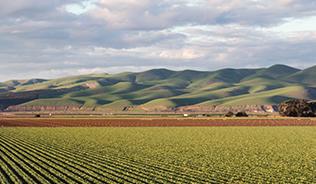Sara Parkin examines how much progress we have made in meeting the world’s environmental challenges.
Coinciding with the 50th birthday of the IES, this year is also the 50th anniversary of the first United Nations (UN) Earth Summit, making it a good moment to reflect on what has been achieved in those 50 years and what lessons this holds for the next 50.
What happened to the revolution?
Sir Peter Scott asked the question the 1972 UN Conference on the Human Environment in Stockholm (the first Earth Summit) set out to answer:
‘Do we want to live on an overcrowded and polluted earth, or are we sensible enough to take the long view about our environment and take the necessary steps to improve the quality of human life all over the world?’1
‘No,’ came the reply, ‘we do not want to live like that.’ Though Scott’s necessary steps were thought by Max Nicholson to need an ‘Environmental Revolution on the scale of the Reformation or Industrial Revolution’, neither a revolution nor any substantial policy intervention by world leaders ever materialised.2
Consequently, here we are, 50 years on, facing the same challenge made immeasurably greater because of a lack of meaningful progress. Although scientific understanding has deepened, it has not been translated into political or practical actions of any sufficient magnitude. Why, for example, do we fixate on recycling waste after it has been produced instead of avoiding its creation in the first place? Read the latest reports from the Intergovernmental Panel on Climate Change3 and you would be forgiven for thinking humans are concerned only with minutely monitoring our own extinction. In fact, not one significant negative trend amongst the deadly trinity of population, resource depletion and pollution 1 has been slowed, let alone halted or reversed.
Population. Our species has nearly doubled in number to nearly 8 billion.4 Only human beings and crabeater seals (which number a few million at best) have broken the ecological rule that large, aggressive mammals are rare.5 The extinction-monitoring industry estimates that humans and their domesticated animals make up 96 per cent of the total global mammal biomass while wild mammals account for only 4 per cent.
Resources. Our material resource extraction and electricity use have soared from 7 to nearly 12 tonnes6 and from 1,273 to 3,000 KwH7 respectively, per person, per year. As Vaclav Smil explains, we are overharvesting the biosphere.8
Pollution. Volumes of all kinds of pollutants – emissions of the linear, technology-driven economic model used by our species – have reached extraordinary levels in air, water and land, as well as in the bodies of animals, including ours. We have disrupted climate-regulating systems at a global level.
So where is the revolution? According to the press, passionate frontwoman of the Friday School Strikes (see Figure 1), Greta Thunberg, is spearheading a revolution of the young generation of the 2020s. But have the efforts of Thunberg’s co-campaigners made any difference since she started in 2018? Well, no. She was a sideshow at the November 2021 26th Conference of the Parties (COP26) meeting to discuss progress (or lack thereof) on halting emissions of climate-damaging gases and berated the event for being a ‘two-week-long celebration of business as usual and blah, blah, blah’.9
Moreover, Thunberg belongs to the third (hailed yet failed?) youthful revolution on behalf of the environment. I was part of the first in the run-up to 1972’s Earth Summit, convinced by Rachael Carson’s Silent Spring and Meadows et al.’s The Limits to Growth.10,11 Older but still as ardent, I was also very involved with the youthful and rapidly growing green political movement in the decade before the 1992 Earth Summit.
So, how is it that three promising future-generation inspired environmental revolutions have failed to galvanise anything like the changes needed to overcome the deadly trinity?
Have we underestimated the opposition?
IES founders will remember the time of great optimism in the 1970s when the UN set up an Environment Programme and governments around the globe created their own environmental departments. ‘Home and dry,’ we thought, ‘that is the environment firmly on the political agenda!’ The reality, however, was that by splitting off environmental matters from social and economic policy, business as usual did not break a step. And we fell for it; many readers will remember how environmental impact assessments and corporate responsibility statements kept environmentalists busy and at a safe distance from the main stage – of social and economic change – for years.
And remember Agenda 21, launched at the 1992 Earth Summit, which did engage schools and young people in local action, until it was replaced (because it was working?) by eight reasonable-sounding millennium development goals (MDG) in 2000?12 Had a serious effort been made around those goals instead of letting them fizzle to failure amid manipulated targets and statistics, might things have been different? Maybe. Instead, the MDGs were uncritically dumped to be replaced in 2015 by 17 sustainable development goals (SDG) with 169 associated targets.13
Before Thunberg took up her placards, I could see the SDGs were a sleight of hand to keep the green and social justice movements off the backs of the business-as-usual brigade (politicians, financial markets and big businesses). Which they did. Comfortable that SDG 8 – to promote sustained, inclusive and sustainable economic growth, full and productive employment and decent work for all – would provide a cover for business as usual, the SDGs invited ‘all of us’ to engage with them on a pick ’n’ mix basis.14 Once again, we environmentalists got on board uncritically.
Last November’s COP26 meeting hosted another coup by business as usual. The shocking political failure to agree (and take real action) to reduce emissions of greenhouse gases was shrouded by a dramatic announcement by the Glasgow Financial Alliance for Net Zero (over 450 firms across 45 countries) that promised mobilisation of US$130 trillion in assets to avoid dangerous climate change. Once again, popular (and political?) momentum was diverted while private financial institutions and central banks colonised the agenda. Sheepishly, the official meeting participants could only agree to reconvene the following year (i.e. November 2022), unable even to meet their own prior commitment to transferring $100 billion a year to developing countries. UN Secretary-General, António Guterres, agreed with Thunberg about the outcome: ‘The approved texts are a compromise. They reflect the interests, the conditions, the contradictions, and the state of political will in the world today.’15
By way of a summary critique of the efforts of 50 years’ worth of Earth summits, 34 years’ worth of the IPCC and 12 years of MDGs and SDGs in bringing our species to its senses, I cannot better the IES’s comment on the IPCC’s Impacts, Adaption and Vulnerability Report:3
‘Presenting a formidable collection of evidence, the report confirms a familiar story: climate change is creating serious and significant vulnerabilities for human society and the natural world, with consequences already being felt across the globe at a greater scale than previously anticipated, and which will only get more severe in the future if we continue with business as usual.’16
Lessons from the past 50 years
So where did the environmental movement get it wrong? Reflecting on 50 years of campaigning, I would highlight three things:
First, our species has lost that deep understanding of how we are inextricably part of nature and its grand project: evolution. Not just in the way modern education systems have marginalised the topic, but also because we ignore the hard-gained wisdom of our ancestors about how to live successfully with the rest of nature.
Second, we have been naive, too, about how (political) power works. In a world where transnational billionaires are richer than some states, crises and campaigns will have limited impact on their own. Follow-through with political and institutional changes is crucial, as is the courage to experiment, share learning, and endlessly discuss what we are trying to achieve.
Most of all, we have been criminally negligent by not having a positive, inspiring, people-centred and logical narrative about how good it would be to live well with nature and each other. Did Martin Luther King try to rally support (as we did about CO2 emissions) by saying that we shall reduce racism by 17 per cent from 2005 levels by 2020? No. He had an inspiring, memorable, mobilising dream.

Figure 1. Climate protesters gather at a School Strike 4 Climate march in Sydney, Australia. The international movement, also known as Fridays for Future, was founded by Greta Thunberg. (© School Strike 4 Climate)
The green dream
In my green dream we would consider progress and success those things that contribute to people feeling good about themselves, their relationships, and the place where they live. That is what makes us happiest, we say. We would have new economic logic based on fewer people consuming less stuff, in which we make our living doing things that restore ecosystems, beautify our built environment and expand our personal and social capabilities. Our financial and technological systems would serve that dream. Instead of dragging us towards ecological disaster and forcing the sick and frail into the care of robots, we would ensure these systems work in support of our instinctive preference for fairness and kindness.
Could we create momentum around bringing the green dream to life. How would you tell the story?
Just doing it
As I write, the UK Government has agreed to the introduction of a GCSE (a secondary education qualification taken by pupils in England, Northern Ireland and Wales) in natural history. The campaign took four years, although we need to retrofit entire populations in less than half that time. Can we grasp the initiative and realise our green dream by starting to live it now?
One of my heroes is Nelson Mandela. He created and sustained an irresistible momentum around a single unwavering goal: the total end to apartheid. His strategy had education at its heart, and he celebrated every step in the direction of this singular goal. He believed in striving for the best life one could have and not settle for anything less.
Imagine if we did the same for the green dream – neither left nor right but towards sustainability: one goal, many pathways!
Another hero is Vaclav Havel. A Czechoslovakian playwright and dissident during the 1970s and 1980s, he showed the power of ‘living in truth’. The then-communist state did not allow people to meet, speak or write freely. Havel lived as if it were normal to do that. Regularly jailed, he persistently asked his jailors, his interrogators and, eventually, leaders of the crumbling regime why he could not meet friends freely and publish his plays. When the country’s communist government fell, the people installed Havel as their president. As a truth-teller, he was trusted.
Just imagine if we learned from Mandela and Havel. If we were not distracted from our goal and instead lived ‘in truth’ and as if sustainability – the green dream – was normal. We could ask politicians, journalists, anyone and everyone:
‘Why? What is stopping us insulating our homes, farming with rather than against nature, making sustainability literacy mandatory in all publicly funded schools and colleges, ending extremes of poverty and discrimination, replacing an economic logic that is socially and ecologically destructive?’
And so on, with equivalent questions at neighbourhood, organisational and international levels. Learning from Mandela and Havel and organising ourselves now to live sustainably and enjoyably with nature and each other we would be campaigning from the front foot – asking why from a positive place. An attractive place to others looking for hope in these anxious times. A good place for building momentum for change.
‘Hope is definitely not the same thing as optimism. It’s not the conviction that something will turn out well, but the certainty that something makes sense, regardless of how it turns out. It is this hope, above all, that gives us strength to live and to continually try new things, even in conditions that seem as hopeless as ours do, here and now. In the face of this absurdity, life is too precious a thing to permit its devaluation by living pointlessly, emptily, without meaning, without love, and finally, without hope.’17
Sara Parkin is Principal Associate at the Sustainability Literacy Project and is currently working on her fifth book, provisionally titled What Does Good Look Like: An Antidote to Anxiety. A longtime campaigner, Sara played leadership roles in the UK Green party and in European green politics and was a co-founder of Forum for the Future with Jonathon Porritt and Paul Ekins. There, she designed and ran a master’s degree in leadership for sustainable development. Her 2010 book based on the course, The Positive Deviant, is still used by colleges around the world. An honorary fellow of the IES, she gave the Fourth Burntwood Memorial Lecture in 1997.
The views expressed in this article are those of the author and do not necessarily reflect the views of the IES or other organisations or individuals mentioned.
References
- Stone, P.B. (1973) Did We Save the Earth at Stockholm? (Foreword p. v). London: Earth Island.
- Nicholson, M. (1970) The Environmental Revolution. London: Hodder and Stoughton.
- Intergovernmental Panel on Climate Change (no date) Climate Change 2022: Impacts, Adaptation and Vulnerability. https://www. ipcc.ch/report/ar6/wg2 (Accessed: 24 April 2022).
- United Nations Department of Economic and Social Affairs (no date) Population dynamics: world population prospects 2019. https:// population.un.org/wpp (Accessed: 30 April 2022).
- Tudge, C. (2000) The Variety of Life: A Survey and Celebration of all the Creatures That Have Ever Lived (p. 610). Oxford: Oxford University Press.
- United Nations Environment Programme (2017) With resource use expected to double by 2050, better natural resource use essential for a pollution-free planet. https://www.unep.org/ news-and-stories/press-release/resource-use-expected-double2050-better-natural-resource-use (Accessed: 19 May 2022).
- United States Energy Information Administration (no date) International electricity data. https://www.eia.gov/international/ data/world/electricity/electricity-consumption (Accessed: 24 April 2022).
- Vaclav, S. (2013) Harvesting the Biosphere: What We Have Taken from Nature. Massachusetts: MIT Books.
- Daily Mail (2021) Greta Thunberg: COP26 is ‘business as usual and blah blah blah’. YouTube video, 3:58. https://youtu.be/ RgY8KCp6K7Q (Accessed: 19 May 2022).
- Carson, R. (1962) Silent Spring. Boston: Houghton Mifflin.
- Meadows, D.H., Meadows, D.I., Randers, J., Behrens, W.W. III. (1972) The Limits to Growth. London: Earth Island.
- United Nations Department of Economic and Social Affairs (no date) Millennium development goals. https://www.un.org/en/ development/desa/millennium-development-goals.html (Accessed: 19 May 2022).
- United Nations Department of Economic and Social Affairs (no date) The 17 goals. https://sdgs.un.org/goals (Accessed: 24 April 2022).
- United Nations Department of Economic and Social Affairs (no date) Transforming our world: the 2030 agenda for sustainable development, Article 21. https://sdgs.un.org/2030agenda (Accessed: 30 April 2022).
- United Nations Climate Action (no date) COP26: Together for our planet. https://www.un.org/en/climatechange/cop26 (Accessed: 30 April 2022).
- Institution of Environmental Sciences (2022) Headlines & deadlines: The latest IPCC report. https://www.the-ies.org/analysis/ headlines-deadlines-latest (Accessed: 24 April 2022).
- Hardin, M. (2011) Never hope against hope, Esquire, 19 December, originally published October 1993. https://www.esquire.com/ news-politics/news/a12135/vaclav-havel-hope-6619552 (Accessed: 19 May 2022).





